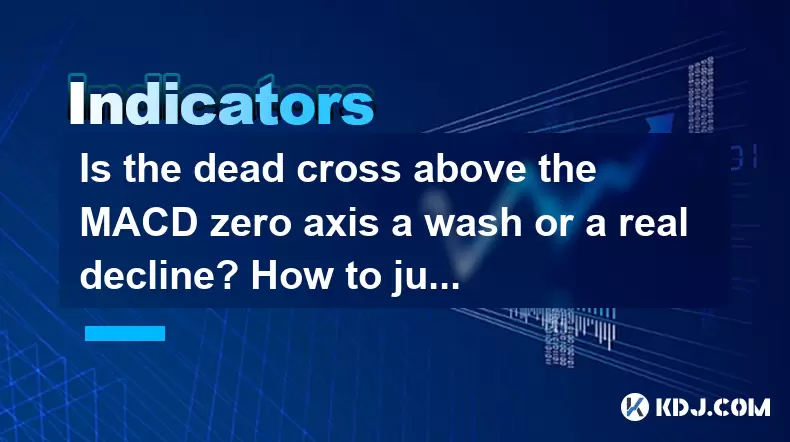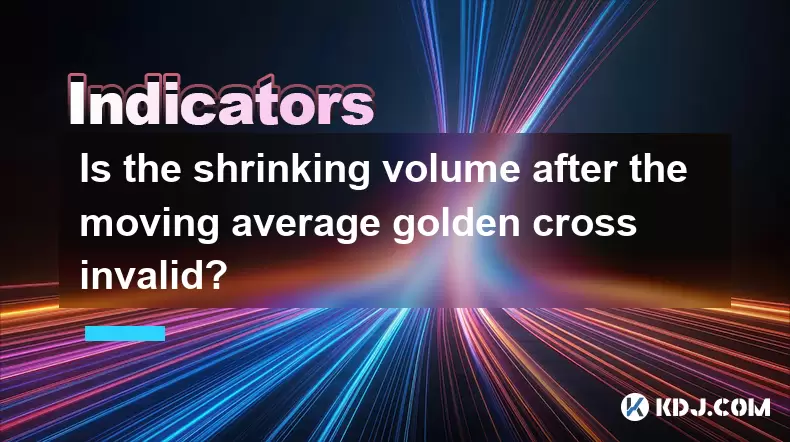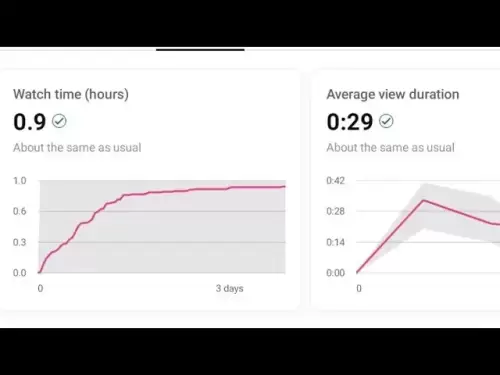-
 Bitcoin
Bitcoin $102,838.3669
-0.64% -
 Ethereum
Ethereum $2,288.9548
-5.70% -
 Tether USDt
Tether USDt $1.0003
0.01% -
 XRP
XRP $2.0782
-2.11% -
 BNB
BNB $632.3292
-1.65% -
 Solana
Solana $136.1959
-2.98% -
 USDC
USDC $1.0000
0.01% -
 TRON
TRON $0.2726
-0.11% -
 Dogecoin
Dogecoin $0.1566
-4.06% -
 Cardano
Cardano $0.5552
-5.18% -
 Hyperliquid
Hyperliquid $34.2720
-1.05% -
 Bitcoin Cash
Bitcoin Cash $466.8638
-1.20% -
 Sui
Sui $2.5776
-5.75% -
 UNUS SED LEO
UNUS SED LEO $8.9685
0.02% -
 Chainlink
Chainlink $12.0304
-5.11% -
 Stellar
Stellar $0.2375
-2.47% -
 Avalanche
Avalanche $16.9243
-3.74% -
 Toncoin
Toncoin $2.8539
-2.82% -
 Shiba Inu
Shiba Inu $0.0...01091
-4.04% -
 Litecoin
Litecoin $81.4197
-2.58% -
 Hedera
Hedera $0.1374
-5.25% -
 Monero
Monero $310.1410
-1.30% -
 Ethena USDe
Ethena USDe $1.0006
0.01% -
 Dai
Dai $1.0000
0.00% -
 Polkadot
Polkadot $3.2843
-5.48% -
 Bitget Token
Bitget Token $4.2110
-1.76% -
 Uniswap
Uniswap $6.4977
-7.96% -
 Pepe
Pepe $0.0...09321
-7.31% -
 Pi
Pi $0.5074
-6.27% -
 Aave
Aave $234.8342
-5.61%
Is the dead cross above the MACD zero axis a wash or a real decline? How to judge the main intention by volume?
A dead cross above the MACD zero axis may signal a bearish trend, but high volume and other indicators are crucial to determine if it's a real decline or a wash.
May 27, 2025 at 09:28 pm

The debate surrounding the significance of a dead cross above the MACD zero axis in the cryptocurrency market is a topic of great interest among traders. A dead cross occurs when the short-term moving average crosses below the long-term moving average, often signaling a potential bearish trend. However, the context in which this dead cross occurs can significantly influence its reliability as a bearish indicator. In this article, we will explore whether a dead cross above the MACD zero axis is a mere wash or a true signal of decline, and how volume can be used to discern the main intention behind market movements.
Understanding the MACD and Dead Cross
The Moving Average Convergence Divergence (MACD) is a trend-following momentum indicator that shows the relationship between two moving averages of a security’s price. The MACD is calculated by subtracting the 26-period Exponential Moving Average (EMA) from the 12-period EMA. The result of this calculation is the MACD line. A signal line, which is a 9-period EMA of the MACD line, is then plotted on top of the MACD line, and the point where these two lines cross is significant for traders.
A dead cross on the MACD occurs when the MACD line crosses below the signal line, suggesting that bearish momentum is gaining strength. However, the position of this dead cross in relation to the zero axis of the MACD can provide additional context. The zero axis represents the point where the short-term and long-term moving averages are equal. A dead cross above the zero axis indicates that, despite the bearish signal, the overall trend might still be bullish.
Analyzing the Dead Cross Above the Zero Axis
When a dead cross occurs above the MACD zero axis, it is crucial to consider the broader market context. The position above the zero axis suggests that the short-term momentum is still positive relative to the long-term trend, but the bearish crossover indicates a potential slowdown in bullish momentum. This scenario can be interpreted in several ways:
- Temporary Correction: The dead cross might signal a temporary correction within an ongoing bullish trend. In this case, the market could see a brief decline before resuming its upward trajectory.
- Early Warning of a Trend Reversal: Alternatively, the dead cross might be an early warning sign of a more significant trend reversal. If other indicators and market conditions support this interpretation, the dead cross could be a precursor to a more sustained bearish move.
To determine whether the dead cross is a wash or a real decline, traders should look at additional technical indicators and market factors.
Role of Volume in Interpreting Market Intentions
Volume is a critical factor in understanding the true intentions behind market movements. High volume accompanying a dead cross can reinforce the bearish signal, suggesting that there is significant selling pressure behind the price decline. Conversely, low volume during a dead cross might indicate a lack of conviction in the bearish move, potentially signaling a wash or a false signal.
- High Volume and Dead Cross: If the dead cross occurs with high trading volume, it indicates strong participation in the bearish move. This scenario increases the likelihood that the dead cross is a genuine signal of decline rather than a wash.
- Low Volume and Dead Cross: If the dead cross occurs on low volume, it might suggest that the bearish signal lacks the necessary momentum to sustain a longer-term decline. In this case, the dead cross could be considered a wash, and the market might quickly revert to its previous bullish trend.
Combining Volume Analysis with Other Indicators
To accurately judge the main intention behind a dead cross above the MACD zero axis, traders should combine volume analysis with other technical indicators. Some key indicators to consider include:
- Relative Strength Index (RSI): The RSI can help identify overbought or oversold conditions. If the RSI is in overbought territory when the dead cross occurs, it might reinforce the bearish signal. Conversely, if the RSI is neutral or oversold, the dead cross might be less reliable.
- Bollinger Bands: These can provide insight into market volatility and potential price breakouts. A dead cross occurring near the upper Bollinger Band might suggest a more significant bearish move, while a dead cross near the lower band might indicate a wash.
- On-Balance Volume (OBV): The OBV can help confirm the volume trends. If the OBV is declining alongside the dead cross, it supports the bearish signal. If the OBV remains stable or increases, it might suggest a wash.
Practical Steps to Analyze a Dead Cross
When faced with a dead cross above the MACD zero axis, traders can follow these steps to determine its significance and the main market intention:
- Identify the Dead Cross: Confirm that the MACD line has crossed below the signal line and that this crossover is above the zero axis.
- Analyze Volume: Check the volume during the dead cross. High volume suggests a stronger bearish signal, while low volume might indicate a wash.
- Examine Other Indicators: Look at additional technical indicators like RSI, Bollinger Bands, and OBV to gain a more comprehensive view of market conditions.
- Review Market Context: Consider broader market trends, news, and events that might influence the reliability of the dead cross.
- Make a Decision: Based on the analysis, decide whether the dead cross is a genuine signal of decline or a wash. Adjust trading strategies accordingly.
Case Studies: Real-World Examples
To illustrate the concepts discussed, let's look at a couple of real-world examples from the cryptocurrency market:
- Example 1: Bitcoin (BTC): In early 2021, Bitcoin experienced a dead cross above the MACD zero axis. The volume during this period was relatively high, suggesting strong bearish momentum. However, the RSI was in overbought territory, and the OBV was still trending upwards. In this case, the dead cross was followed by a brief correction but was ultimately a wash, as the bullish trend resumed shortly after.
- Example 2: Ethereum (ETH): In mid-2021, Ethereum saw a dead cross above the MACD zero axis with low volume. The RSI was neutral, and the OBV showed no significant decline. This dead cross turned out to be a wash, with the price quickly recovering and continuing its bullish trend.
These examples highlight the importance of considering multiple factors when interpreting a dead cross above the MACD zero axis.
Frequently Asked Questions
Q1: Can a dead cross below the MACD zero axis be considered more reliable than one above the zero axis?
A dead cross below the MACD zero axis is generally considered more reliable as a bearish signal because it indicates that the short-term momentum has turned negative relative to the long-term trend. However, even in this case, volume and other technical indicators should be analyzed to confirm the signal's strength.
Q2: How can traders use the MACD histogram to further interpret the dead cross?
The MACD histogram represents the difference between the MACD line and the signal line. A decreasing histogram following a dead cross can reinforce the bearish signal, indicating increasing bearish momentum. Conversely, if the histogram starts to increase after the dead cross, it might suggest that the bearish momentum is waning, potentially indicating a wash.
Q3: Are there specific volume patterns that traders should look for to confirm a dead cross signal?
Traders should look for volume spikes or sustained high volume during the dead cross to confirm the bearish signal. Additionally, observing volume trends leading up to the dead cross can provide insight into whether the signal is likely to be a wash or a genuine decline. For example, a gradual increase in volume leading to the dead cross might suggest a more reliable bearish move.
Q4: How can traders differentiate between a wash and a real decline in a volatile cryptocurrency market?
In a volatile market, differentiating between a wash and a real decline requires a careful analysis of multiple factors. Traders should consider the strength of the dead cross signal, volume trends, other technical indicators, and broader market context. Additionally, monitoring price action and market sentiment can provide further clues about the likelihood of a wash versus a sustained decline.
Disclaimer:info@kdj.com
The information provided is not trading advice. kdj.com does not assume any responsibility for any investments made based on the information provided in this article. Cryptocurrencies are highly volatile and it is highly recommended that you invest with caution after thorough research!
If you believe that the content used on this website infringes your copyright, please contact us immediately (info@kdj.com) and we will delete it promptly.
- Bitcoin in Europe: France's Budding Romance with BTC
- 2025-06-22 12:45:12
- BNB Chain Altcoin Meltdown: Navigating the Storm and Spotting Opportunities
- 2025-06-22 12:45:12
- Inherited Riches: Rare Coin Collection Valued at £6,000 – Is Your Change Worth a Fortune?
- 2025-06-22 12:25:12
- Fiat-Backed Stablecoins, Tokenized Treasuries, and DeFi: A New York Minute on the Future of Finance
- 2025-06-22 12:25:12
- Pumpfun Token Launch Faces Crypto Backlash: A Billion-Dollar Gamble?
- 2025-06-22 12:50:12
- Pepe Coin Price Prediction: Crash Risk and What's Next for Frog-Themed Crypto
- 2025-06-22 13:05:13
Related knowledge

Does the second surge in the RSI overbought zone induce more?
Jun 22,2025 at 08:35am
Understanding the RSI Overbought ZoneThe Relative Strength Index (RSI) is a momentum oscillator commonly used in technical analysis to measure the speed and change of price movements. It ranges from 0 to 100, with values above 70 typically considered overbought and values below 30 considered oversold. When the RSI enters the overbought zone for the firs...

Does the sudden contraction of ATR indicate the end of the trend?
Jun 20,2025 at 11:14pm
Understanding ATR and Its Role in Technical AnalysisThe Average True Range (ATR) is a technical indicator used to measure market volatility. Developed by J. Welles Wilder, ATR calculates the average range of price movement over a specified period, typically 14 periods. It does not indicate direction—only volatility. Traders use ATR to gauge how much an ...

Is it invalid if the DMI crosses but the ADX does not expand?
Jun 21,2025 at 09:35am
Understanding the DMI and ADX RelationshipIn technical analysis, the Directional Movement Index (DMI) consists of two lines: +DI (Positive Directional Indicator) and -DI (Negative Directional Indicator). These indicators are used to determine the direction of a trend. When +DI crosses above -DI, it is often interpreted as a bullish signal, while the opp...

How to filter false signals when the SAR indicator frequently flips?
Jun 21,2025 at 08:43pm
Understanding the SAR Indicator and Its BehaviorThe SAR (Stop and Reverse) indicator is a popular technical analysis tool used in cryptocurrency trading to identify potential reversals in price movement. It appears as a series of dots placed either above or below the price chart, signaling bullish or bearish trends. When the dots are below the price, it...

Is the trend continuation when the Williams indicator is oversold but there is no rebound?
Jun 20,2025 at 11:42pm
Understanding the Williams %R IndicatorThe Williams %R indicator, also known as the Williams Percent Range, is a momentum oscillator used in technical analysis to identify overbought and oversold levels in price movements. It typically ranges from 0 to -100, where values above -20 are considered overbought and values below -80 are considered oversold. T...

Is the shrinking volume after the moving average golden cross invalid?
Jun 22,2025 at 10:42am
Understanding the Moving Average Golden Cross in CryptocurrencyIn the world of cryptocurrency trading, technical indicators play a crucial role in decision-making. One such indicator is the moving average golden cross, which occurs when a short-term moving average crosses above a long-term moving average, typically signaling a bullish trend. This event ...

Does the second surge in the RSI overbought zone induce more?
Jun 22,2025 at 08:35am
Understanding the RSI Overbought ZoneThe Relative Strength Index (RSI) is a momentum oscillator commonly used in technical analysis to measure the speed and change of price movements. It ranges from 0 to 100, with values above 70 typically considered overbought and values below 30 considered oversold. When the RSI enters the overbought zone for the firs...

Does the sudden contraction of ATR indicate the end of the trend?
Jun 20,2025 at 11:14pm
Understanding ATR and Its Role in Technical AnalysisThe Average True Range (ATR) is a technical indicator used to measure market volatility. Developed by J. Welles Wilder, ATR calculates the average range of price movement over a specified period, typically 14 periods. It does not indicate direction—only volatility. Traders use ATR to gauge how much an ...

Is it invalid if the DMI crosses but the ADX does not expand?
Jun 21,2025 at 09:35am
Understanding the DMI and ADX RelationshipIn technical analysis, the Directional Movement Index (DMI) consists of two lines: +DI (Positive Directional Indicator) and -DI (Negative Directional Indicator). These indicators are used to determine the direction of a trend. When +DI crosses above -DI, it is often interpreted as a bullish signal, while the opp...

How to filter false signals when the SAR indicator frequently flips?
Jun 21,2025 at 08:43pm
Understanding the SAR Indicator and Its BehaviorThe SAR (Stop and Reverse) indicator is a popular technical analysis tool used in cryptocurrency trading to identify potential reversals in price movement. It appears as a series of dots placed either above or below the price chart, signaling bullish or bearish trends. When the dots are below the price, it...

Is the trend continuation when the Williams indicator is oversold but there is no rebound?
Jun 20,2025 at 11:42pm
Understanding the Williams %R IndicatorThe Williams %R indicator, also known as the Williams Percent Range, is a momentum oscillator used in technical analysis to identify overbought and oversold levels in price movements. It typically ranges from 0 to -100, where values above -20 are considered overbought and values below -80 are considered oversold. T...

Is the shrinking volume after the moving average golden cross invalid?
Jun 22,2025 at 10:42am
Understanding the Moving Average Golden Cross in CryptocurrencyIn the world of cryptocurrency trading, technical indicators play a crucial role in decision-making. One such indicator is the moving average golden cross, which occurs when a short-term moving average crosses above a long-term moving average, typically signaling a bullish trend. This event ...
See all articles
























































































